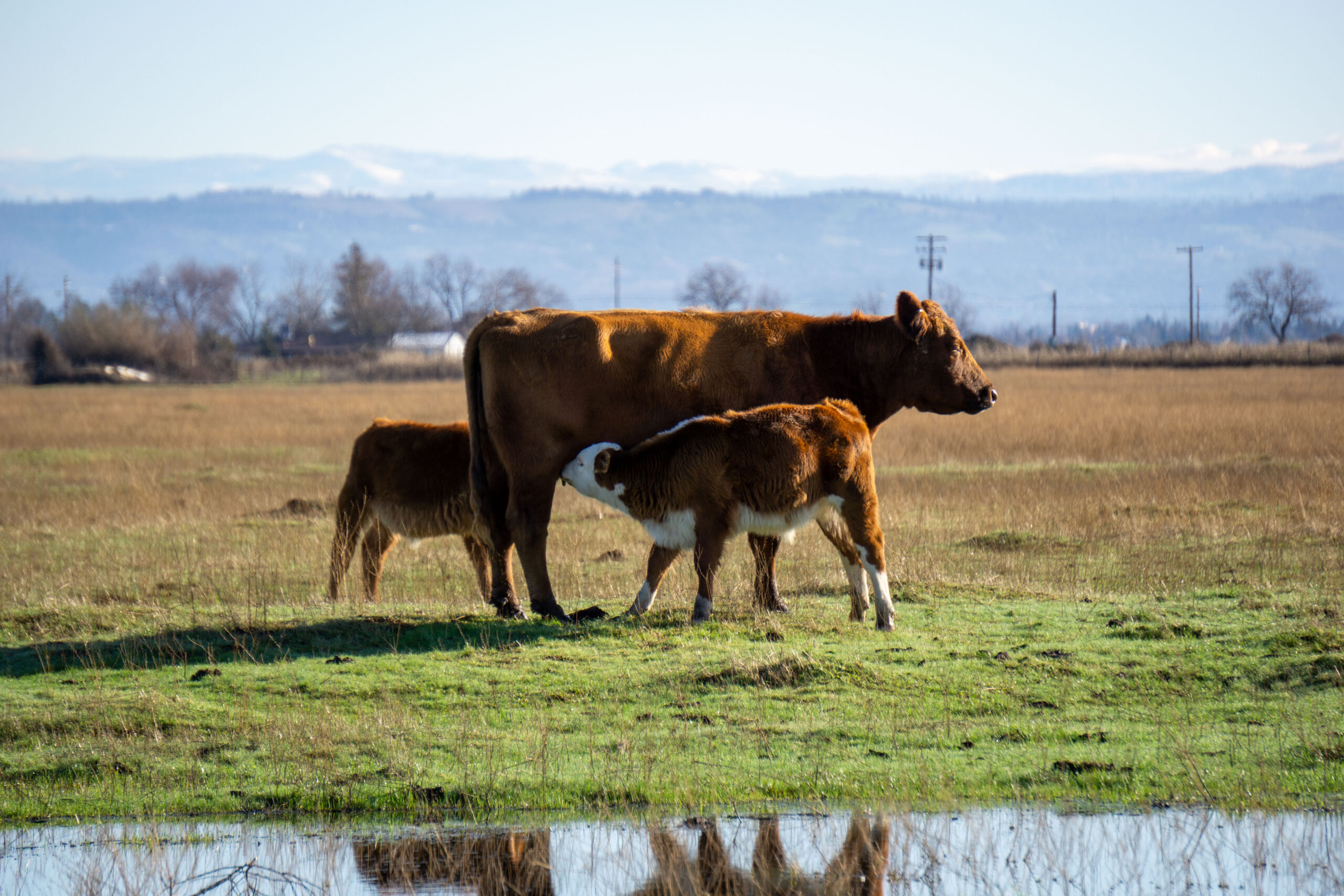 Cow and calf graze at the Lincoln High School Farm in Lincoln, CA. This farm is a good example of a publicly owned working land.
Cow and calf graze at the Lincoln High School Farm in Lincoln, CA. This farm is a good example of a publicly owned working land.
Working lands are managed areas, typically privately owned, but can be publicly owned, which are actively used for agricultural, forestry, or productive purposes, forming the backbone of economic activities related to food and fiber production. They encompass farmland, orchards, ranches, forestland, nurseries, and other agricultural operations where, for example, crops are grown, livestock is raised, and farming practices are implemented. Some working lands may not directly produce agricultural or forestry products but provide ecosystem services that benefit the community, such as conservation easements and preserves that deliver economic and health benefits. Farms, orchards, vineyards, ranches, and forestry operations often fulfill dual roles, providing food and fiber while offering ecosystem services.
The Placer Resource Conservation District considers working lands to be areas that offer goods and services, such as food and fiber, that benefit the broader public for economic or humanitarian purposes beyond individual use. For that reason, backyard livestock grazing and subsistence gardening are typically not considered working lands for many of the District’s grants and projects, although there may be exceptions based on project goals. Contacting the Placer Resource Conservation District is recommended for specific clarifications.
All this being said, the meaning of “working lands” can vary depending on the philosophy of a particular program or organization, or regional and cultural perspectives. Nonetheless, the descriptions given suggest a generally shared understanding of working lands within the conservation sector.
